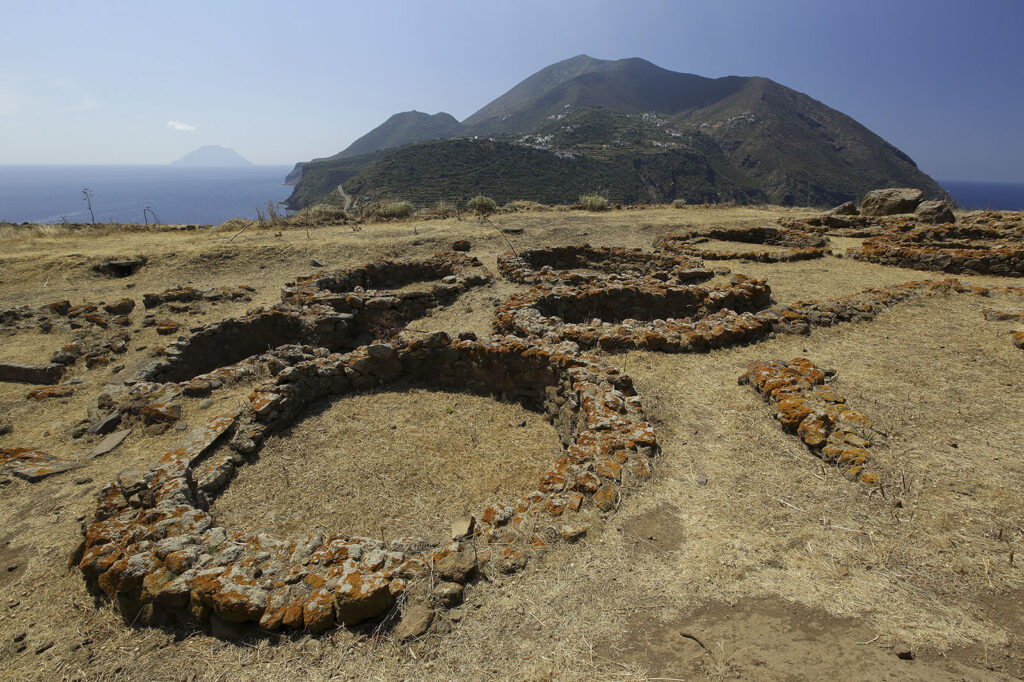The village was brought to light thanks to excavations between 1952 and 1969 in a large plateau at 100 metres above sea level. The reason for this position probably derives from defensive needs that led the population to move from the village of Filo Braccio to Capo Graziano.
The village extends not only on the plateau but also on higher levels and consists of 27 oval-shaped huts leaning against one another. The dimensions vary from 3 to 6 metres in diameter. They were erected with dry-stone walls 50-60 cm wide on which the wooden structure and the roof were then placed. Many huts have their own characteristics, also linked to their use. The floor level was generally lowered and the rooms were like basements.
Several findings of ceramic vases have given us a better understanding of the cultural aspects that witnessed the passage from the first to the second phase of Capo Graziano’s culture.
The pottery also shows similarities with the Aegean pottery from the same period. The presence of imported Aegean pottery dating back to the Late Helladic I-II, between 1650/1400 BC, shows a direct connection with those areas. They were made on a lathe and decorated with brown and red designs.
The southern part of the village shows an important town planning change that corresponds to a different historical period. Structures were built or modified on the pre-existing huts for new lodgings of Sicilian people, but from Thapsos-Milazzese culture. In this new cultural phase the villages were built in sheltered positions and equipped with defensive systems on every Aeolian island except Vulcano. Pottery and ornaments from the Late Helladic III, between 1400 and 1190 BC, are always present in trade with the Aegean areas.
According to
Luigi Bernabò Brea
, the great quantity of Aegean pottery fragments found demonstrated the role played by the island of Filicudi and the other islands in the trade of that period. After a phase of decline in the previous Copper Age, they became emporia of the Mediterranean trade, perhaps “the final point reached by the navigation of the Aegean people who traded the refined products of their art and industry with the raw materials that the Aeolian ships had brought from distant shores”.
